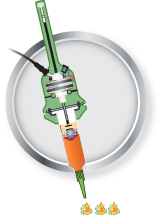 Epoxies are attractive adhesives because of their strength and their ability to suit almost any application. Epoxies can be used as adhesives for wood, metal, glass, stone, and some plastics and are used in the construction of aircrafts, cars, boats, and more.
Epoxies are attractive adhesives because of their strength and their ability to suit almost any application. Epoxies can be used as adhesives for wood, metal, glass, stone, and some plastics and are used in the construction of aircrafts, cars, boats, and more.
When using epoxies and adhesives, it is important to get it right. Here are 5 tips and tricks for using them:
Prepare the Surface
When bonding two or more substrates, the surfaces must be prepared properly. Any contamination can drastically reduce the bond strength or may even prevent bonding completely since the epoxy will bond to the contaminant and not directly to the substrate. The bond surface should be clean.
Take Safety Precautions
Epoxies should not contact the skin. Always wear rubber gloves and protective eye wear when working with epoxy. In addition, make sure there is adequate ventilation because epoxy fumes can be hazardous.
Follow Measuring Directions
Epoxy is made when a hardener and a resin are mixed together. The correct ratio of each component needs to be used in order for the epoxy to reach its maximum strength. Improper ratios can result in a weakened mix or one that won’t cure. Always follow the manufacturers’ directions, as the ratio can vary depending on the product.
Mix in Small Batches
Epoxy generates heat as it cures. If you mix a large batch, it will generate more heat and cure quickly. By mixing small batches, you have more time to work with it. Measure out only what you’ll need because you can’t save any leftovers.
Dispose of Excess and Store Properly
Liquid epoxy cannot be disposed with household or industrial garbage. It must be disposed by a licensed company. If the epoxy is solidified it can be disposed as solid waste, which is the safest method. Always store the resin and hardener separately and in a cool, dry place that is away from sunlight. Shelf life is reduced by warm temperatures.
Do you want additional information on how to best use epoxies and adhesives? Contact Fishman Corporation to learn more!